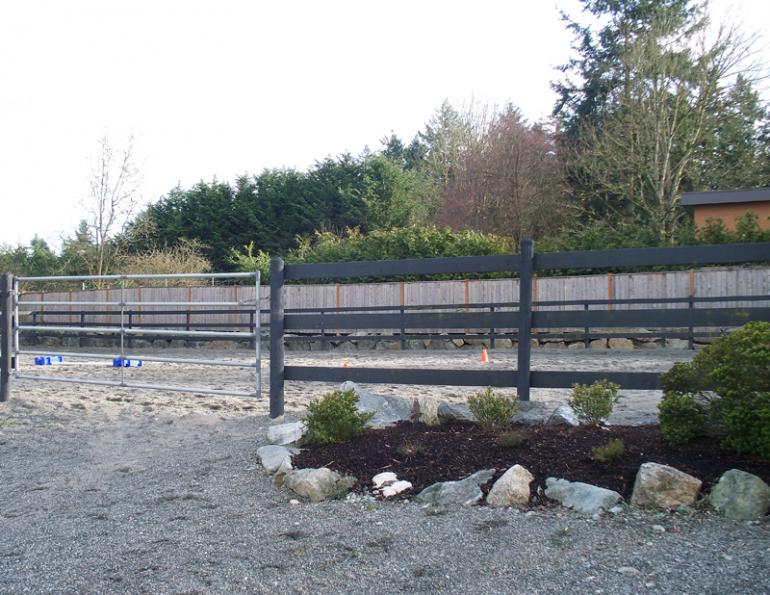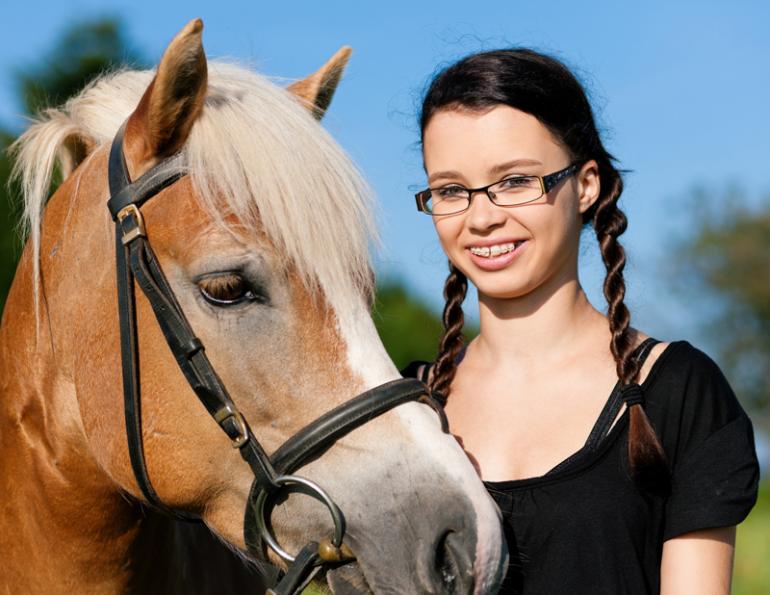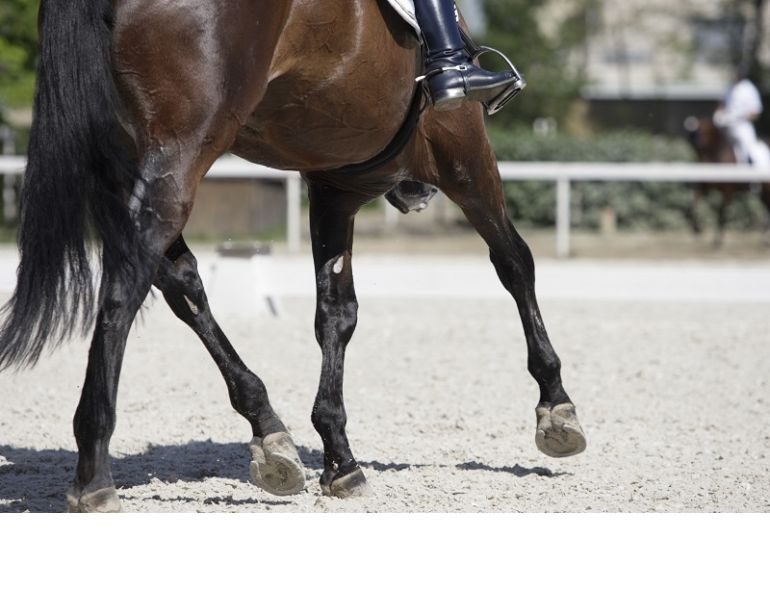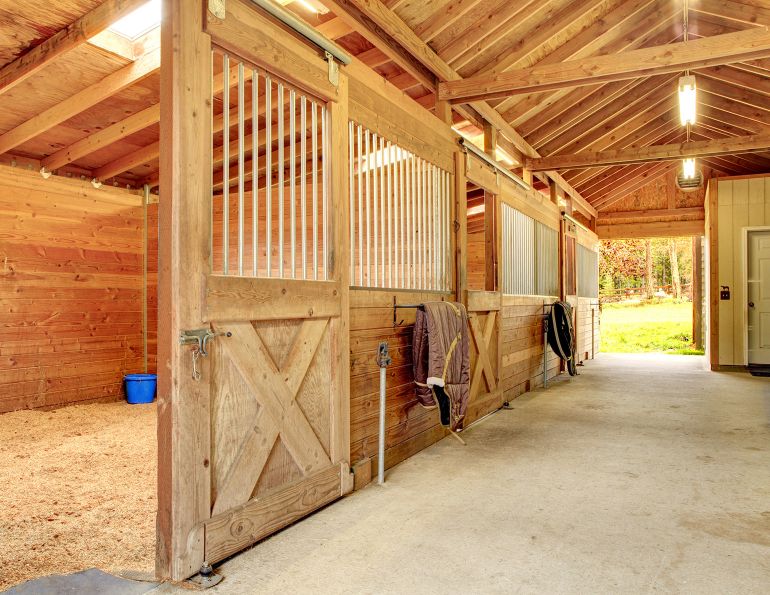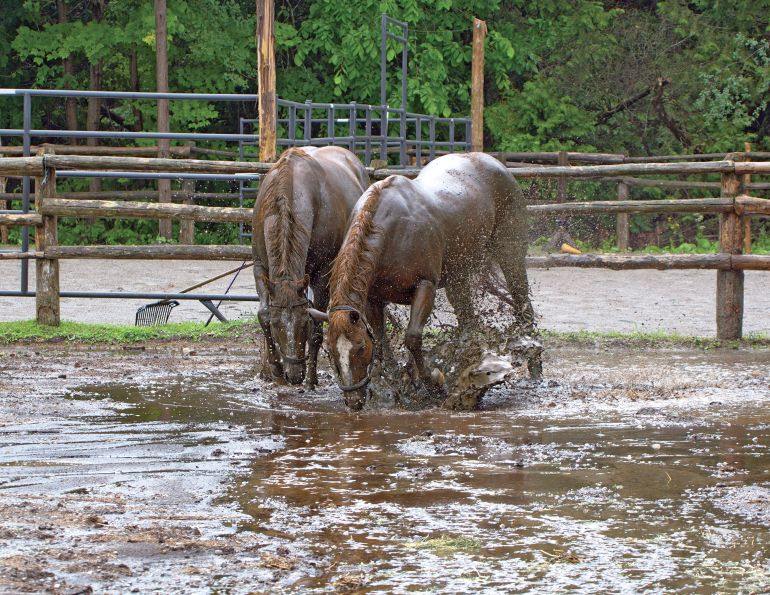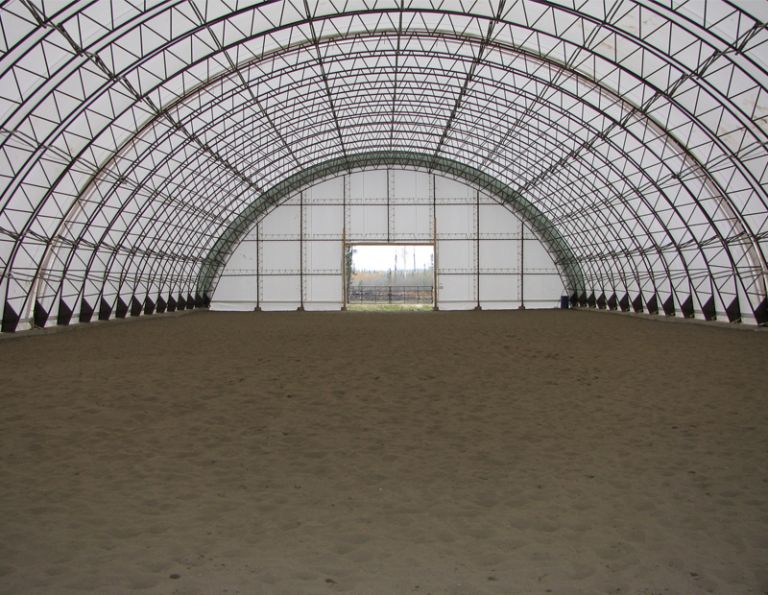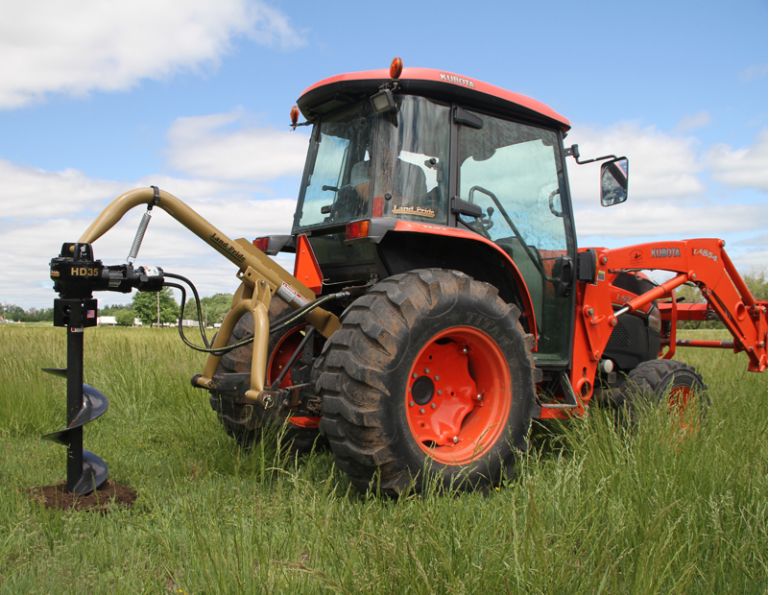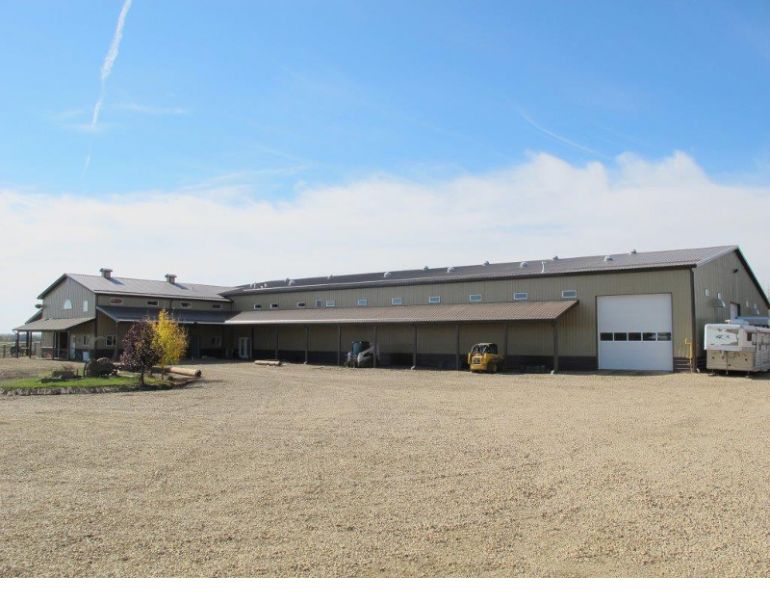By BC Ministry of Agriculture and Lands
Constructing an outdoor riding ring with safe, clean footing that’s easy to maintain, holds up in all kinds of weather, and does not cause pollution is an elusive goal of many horse owners.
The ideal footing should provide good traction, sufficient cushion to prevent excessive concussion, be nonabrasive and as free as possible of dust and odours that irritate both horse and rider. The type of material used should not have a high potential for leachate run-off that can cause pollution.
The three key elements in building an outdoor riding ring are design, materials, and maintenance.
DESIGN
Location: Riding rings should be located in areas of good natural drainage. Notice where water runs and settles on your property so you can select a convenient location where the water drains away naturally. Rings should be at least 45 metres (150 feet) from a watercourse and 30 metres (100 feet) from a domestic water supply. It will likely be necessary to utilize a bulldozer or excavator to do the site preparation.
Size: The average size ring is approximately 21 metres x 42 metres (70 feet x 140 feet). The minimum recommended size is 20 metres x 36 metres (65 feet x 120 feet).
Footing: There are three major components to footing: the sub-base; the base; and the cushion. The ring site should be stripped of all vegetation and topsoil. In most areas this will leave a clay sub-base. To allow water to run off, crown the ring with a two percent slope and compact the clay. A 1.2 metre x 1.8 metre (4 feet x 6 feet) wide swale, 25 centimetre (one foot) deep, can be dug around the perimeter to carry away the runoff.
Drainage: Perimeter drainage using drainage pipes may be required to reduce soil saturation around the ring. Water should be encouraged to run off the surface of the ring into the perimeter ditch or swale rather than move down through the ring surface. A well compacted, properly tapered sub-base is critical to good drainage. In areas of extremely high rainfall, a poly geo textile membrane may be needed over the clay to prevent it from softening and working up to the surface. Water from a swale can only be directed into a watercourse if it is not contaminated with materials that will cause pollution.
The ring design will not prevent subsoils from becoming saturated; therefore, a well-drained site is imperative.
MATERIALS
Base: The base further stabilizes and weatherproofs the area. A layer of uniform, dense graded, aggregate is recommended. This type of material can go by the name of stone dust, limestone screenings, or decomposed granite, and should not have particles larger than nine millimetres (3/8 inches). Approximately 144 metres cubed (180 yards cubed) will be required for an average ring, and after damping and compacting should provide a 100 millimetre x 150 millimetre (4 inch to 6 inch) base.
Cushion: The two most common cushion materials are sand or woodwaste products such as sawdust, shavings, or bark mulch. Sand is the most durable and able to withstand frequent use. Medium coarse, washed sand is recommended. Unwashed sand or dead sand becomes very dusty when dry. In the average ring, 72 metres cubed (90 yards cubed) will provide a 62 millimetre to 75 millimetre (2.5 inch to 3 inch) cushion.
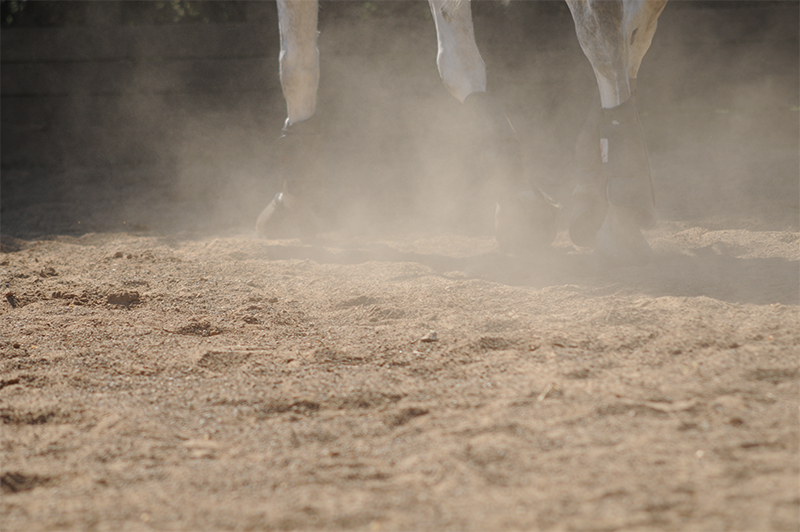
Unwashed sand or dead sand becomes very dusty when dry. Washed sand, either alone or mixed with organic material, is a better option. Photo: Flickr/Steven Lilley
Woodwaste products are less expensive than sand and less dusty than unwashed sand. However, woodwaste gradually decomposes and after several years can retain enough water to form soggy patches in the ring. Sawdust rings can also be quite slippery when dry. Woodwaste products must be used so as not to cause pollution. Leachate must not be discharged into the environment.
An inexpensive and environmentally safe option is a mixture of sand and an organic material such as sawdust, peat moss, or composted manure. The sand provides the traction necessary to prevent slipping and the organic material retains moisture. Woodwaste, in general, and cedar shavings and hog fuel in particular, are not recommended as they produce toxic leachate.
Oil products must not be used to control dust. Oil will coat small particles and be breathed in by both the horse and rider.
LOW USE RINGS
For a ring with low use, the base may be eliminated and a 6 inch (150 millimetre) sand cushion, compacted, can be used. In this case, grading and compaction of the sub-base again is critical for good drainage.
FENCING
Fencing is optional and should suit the ring use. Fences, angled back (optional) to protect riders’ legs, should be a maximum slope of 2.5:12.
MAINTENANCE
Keeping Surface Level: Sand rings should be “floated” frequently to keep the surface level and compacted for maximum water run-off. A simple float can be made with two railway ties that are tied together 90 centimetres (3 inches) apart.
Keeping Cushion Loose: In dry periods or after extended use, the cushion may become compacted. A harrow or shallow rototiller will loosen up the cushion.
IN SUMMARY:
• Select a convenient well-drained site.
• Remove all vegetation and topsoil.
• Crown the ring with a two percent slope from centre and form a swale around the outside.
• Compact the sub-base.
• Add a base of uniform dense graded aggregate; dampen and compact to 100 to 150 millimetres (4 to 6 inches).
• Add a 62 to 75 millimetre (2.5 to 3 inches) cushion of sand, sawdust, or a combination of sand and organic material.
• Keep moist and float and harrow as required.
This article was reprinted with kind permission from Horse Council BC, one of the most successful membership driven multi-breed, multi-discipline provincial equine organizations in Canada. Horse Council BC represents the equine community in BC by collaborating with individuals, businesses, and industry professionals to strengthen communication, education, and safety. For more information about Horse Council BC, and access to further equine educational material free of charge, visit them at www.HCBC.ca.
Main article photo: Jess Hallas-Kilcoyne



